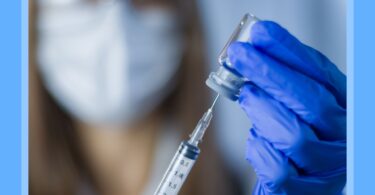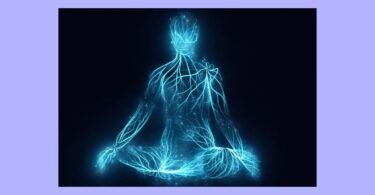Abstract
The most sudden inflammatory disorders that can affect eyelids and commonly encountered disorders in the general practice are the chalazion and hordeolum. This article provides information regarding the etiology, pathophysiology, clinical course, complications, signs and symptoms and line of management of these disorders. This article also reviews the homoeopathic therapeutics suitable for the same.
KEYWORDS: Chalazion, Hordeolum, Homoeopathy, Eyelid
Focal swelling of the eyelid is a common complaint in both primary care and urgent care settings. Often such swellings are identified as either a chalazion, appearing as a characteristically firm and painless lid nodule, or a hordeolum (stye),which is usually painful and tender, although several other benign and malignant processes can be mistaken for these two( 1). Hence a clear understanding of the presentation, clinical course and complication of the disease is essential to differentiate it from various other disorders.
Homeopathic remedies are prescribed according to law of similars. There are several types of prescriptions according to the different types of the clinical presentations of the cases. Homeopathy not only offers safe and permanent cure for the particular disease but also encourages the body’s own restorative processes by strengthening the natural healing system.
CHALAZION
Chalazion is one of the most common inflammatory swellings affecting the eyelid. It is a benign slowly growing cyst that affects upper or lower eyelids, unilaterally or sometimes bilaterally. The word chalazion is a Greek term that means a small pimple. Chalazion is also known as “Meibomian cyst “because it arises due to chronic sterile granulomatous inflammation of the meibomian gland and its duct leading to retained sebaceous secretions. Normally meibomian glands (or tarsal glands) secrete oily sebaceous secretions that spread over the surface of the cornea and conjunctiva to keep them moisture and prevent their dryness (2). Chalazion arises when the ducts of the tarsal glands get obstructed. In these cases, the sebaceous secretions accumulate inside the gland forming a progressively growing cyst on the eyelids.
They are typically slowly enlarging, non-tender eyelid nodules. A deep chalazion is caused by inflammation of tarsal meibomian glands. A superficial chalazion is caused by inflammation of a zeis gland (3). Chalazion are typically benign and self limiting, though they can develop chronic complications. Recurrent chalazion should be evaluated for malignancy.
Symptoms include:
- Painless swelling in the eyelid, gradually increasing in size is the main presenting symptom
- Mild heaviness of lid in the moderately large chalazion
- Blurred vision may occur occasionally due to induced astigmatism by a very large chalazion pressing on the cornea.
- Watering (epiphora) may occur sometimes due to eversion of lower punctum caused by a large chalazion of the lower eyelid.
Signs include:
- Nodules are noted slightly away from the lid margin which is firm to hard and non tender on palpation.
- Upper lid is involved more commonly than lower lid probably due to the presence of more meibomian gland in the upper lid.
- Reddish purple area, where chalazion usually points, is seen on the palpebral conjunctiva after eversion of the lid.
- Projection of the main bulk of the swelling on the skin
CLINICAL COURSE AND COMPLICATION (4)
- Complete spontaneous resolution may occur rarely.
- Slow increase in size is often seen and eventually it may become very large.
- Fungating mass of granulation tissue may be formed occasionally when the lesion bursts on the conjunctival side.
- Secondary infection may lead to formation of hordeolum internum.
- Calcification may occur, though very rarely.
- Malignant change into meibomian gland carcinoma is seen occasionally in elderly people.
Conventional Management
1) Conservative treatment: warm compresses should be applied to affected lid for 15 minutes, 2 to 4 times per day, topical antibiotic eye drops, oral anti-inflammatory drugs.
2) Intralesional injections of long acting steroids (triamcinolone)
3) Incision and curettage
4) Diathermy in case of marginal chalzion
5) Oral tetracycline
HORDEOLUM

A hordeolum, also known as a stye is a bacterial infection in the eyelid that causes a tender, red bump near the edge of the eyelid.
It can present outside or inside of the eyelid and is easily mistaken for a chalazion. The cause is usually a bacterial infection by staphylococcus aureus.
The internal ones are due to infection of the meibomian gland while the external ones are due to infection of the glands of zeis.
Chalazion is an acute or chronic inflammation of the eyelid secondary to obstruction of oil glands in the tarsal plate. Patienst with chronic conditions such as seborrhoeic dermatitits, acne rosacea, blepharitis, diabetes, and high serum lipids may also be at risk of development of both chalazion and stye.(5)
The infection occurs due to thickening, drying, or stasis of the zeis, moll, or meibomian gland secretions. The zeis gland secretes sebum with antiseptic properties that may prevent the growth of bacteria. The moll gland produces immunoglobulin A, mucin 1, and lysosomes which are essential in the immune defense against bacteria in the eye .6) When these glands become clogged or blocked, the eye defense is impaired. The stasis can lead to staphylococcal infection then infiltration by leucocytes and abscess formation following the inflammatory response.
CLINICAL FEATURES
A) EXTERNAL HORDEOLUM (4)

Symptoms include:
Acute pain associated with swelling of lid, mild watering and photophobia.
Signs:
- Stage of cellulitis: Localized firm, red, tender swelling at the lid margin associated with marked oedema. Usually one stye, occasionally multiple.
- Stage of abscess formation: characterized by a visible pus point on the lid margin in relation to the affected cilia.
B) INTERNAL HORDEOLUM:

- Similar to external hordeolum, except that pain is more intense, due to swelling being more embedded deeply in the dense fibrous tissue.
Signs:
The point of maximum tenderness and swelling is usually away from the lid margin and that pus usually points on the tarsal conjunctiva and not on the root of cilia.
LINE OF MANAGEMENT
- Hot compresses 2-3 times a day are very useful in cellulitis stage
- Evacuation of the pus should be done by epilating the involved cilia, when the pus point is formed.
- Surgical incision is required rarely for a large abscess.
- Antibiotic eye drops and ointments.
COMPARISON BETWEEN CHALAZION AND STYE
| CHALAZION | STYE |
| Swelling caused by blockage of sebaceous gland (Meibomian / Zeiss) | Localized inflammation of the hair follicle of the eyelids / Meibomian gland (zeiss or moll) |
| Chronic, Stye can later leads to Chalazion | Acute, recurrent |
| Large, Firm, Usually painless lump | Small, red, purulent, Painful swelling, with erythema |
| Overlying skin is freely movable, Not self limiting | Self limiting |
| Caused by non-infectious Meibomian gland occlusion | Infectious, mostly Staphylococcus aureus |
| after 1-2 days it localizes to the body of the eyelid | After 1-2 days it localizes to the eyelid margin |
| Most commonly found above the eyelashes on upper eyelids | Most commonly found at or near the eyelashes |
| Points inside to the lids | Points externally |
WHO IS AT RISK OF DEVELOPMENT OF STYE AND CHALAZION?
- History of previous styes or chalazion
- Those who have blepharitis (which affect the margin of the eyelids)
- Presence of certain skin conditions like seborrheic dermatitis or acne rosacea
- Presence of systemic conditions like diabetes mellitus
- Increased use of cosmetics and failing to remove eye makeup completely
- For not thoroughly washing or disinfecting the contact lenses before inserting it
- Poor personal hygienic practices (not washing hands and touching into eyes)
HOMOEOPATHIC THERAPEUTICS FOR CHALAZION AND HORDEOLUM
| DRUG DETAILS
common name (C.N.) |
INDICATIONS |
| AETHUSA CYNAPIUM
C.N: Fools Parsley Family: Umbelliferae |
Swelling of the Meibomian gland
Photophobia Eyes drawn downwards Pustules on cornea, edges on lids inflamed and agglutinated at night(11) <3-4 am <evening <warmth <summer >open air >company |
| CALCAREA FLOURICA
C.N: Calcium Fluoride/ Fluor spar |
Flickering and sparks before eyes
Subcutaneous palpebral cysts Tarsal tumors(7) >closing the eyes >pressing tightly(11) >warm applications >heat <during rest <change of weather |
| CALCAREA PICRATA
C.N: Picrate of calcium |
Recurring or chronic boils styes |
| CONIUM
C N: poison hemlock Family: Umbelliferae |
Sensation of coldness or burning of the eye I the open air
Photophobia, excessive lachrymation (7) Inflammation and redness of sclerotica Aversion to light, without inflammation of eyes <artificial light <on closing eyes <taking cold <when he sweats <lying down <before and during menses <bodily or mental exertion >motion >pressure |
| FERRUM PYROPHOS | Tarsal cysts (7) |
| GRAPHITES
C N: Black Lead
|
Eyelids are red and swollen. Eczema, dryness of eyelid, fissured. Intolerance to artificial light.
Shooting pain, Sensation of sand in the eyes Abundant mucous secretion in the eyelids(11) Hordeolum with drawing pain <early morning<warmth<at night <during and after menstruation |
| HEPAR SULPH
C.N: Hahnemann’s calcium sulphide |
Inflammation of eyes and eyelids, sore to touch, with lachrymation (7).Eyelids stuck together with purulent discharges, the child is irritable and touchy. A warm compress speeds the rupture and relieves the pain, Pressure in the eyes as from a foreign body
<when moving eyes< bright light<dry cold winds<cool air<slightest draught <lying on painful sides >warmth>after eating>damp weather |
| LYCOPODIUM CLAVATUM
C N :Club moss family: Lycopodiaceae |
Styes on the eyelids near the internal canthus (7)
Dim, hot eyes. Dryness, stitches and soreness in the eyes, in the evening. (9) |
| PLANTANUS OCCIDENTALIS
CN: Sycamore-Buttonwood Family:Plantaceae |
Chalazion for kids
Indicated for both acute and old neglected cases, where scar formation has caused marked deformity of the eyelid (7), (10) |
| PULSATILLA
C N :Pulsatilla Family: Ranunculaceae |
Chalazion that exude thick, yellow profuse bland discharging pus on pressure.
Recurrent stye and chalazion with acrid lacrimation and swelling of the eyelids (10) Styes on the upper lid (8) <from heat <rich fat food <after eating <towards eating <warm room <lying on painless side >open air >motion >cold application >cold food and drinks |
| RHUS TOX:
C N :Poison Oak Family: |
Styes on the lower eyelids. Inflammation of eyes and lid with redness and agglutination of eyelid at night.
<during sleep <cold <wet rainy weather <after rain <at night <during rest >warm dry weather >motion >walking >rubbing >warm applications |
| STAPHYSAGRIA
C N: Stavesacre Family: Ranunculaceae |
Styes, nodosities in the eyelids. Inflammation of the eyes, with pimples around them.
Halo about candle night at night (8) Chalazion on eyelid near the inner angle of eye accompanied by feeling of heat in the eyeballs. Eyes feel dry despite lacrimation. <anger <indignation <grief <mortification <sexual excesses <tobacco >warmth >rest at night |
| SILICEA:
C N:pure flint
|
Aversion to daylight, styes, it produces dazzling, sharp pain through eyes (7), works well for preventing recurrent styes.
<new moon <in morning<from washing <during menses <damp >warmth >summer >in wet or humid weather |
| SULPHUR:
CN: Sublimated sulphur |
Frequent inflammation no f the lids with burning and profuse secretion of mucus, Ulcerated lids, The lids are relaxed and hang down (8)
Burning ulceration of margin of eyelid Halo around lamp-light (7) <movement of eyes, <light of the sun <at rest <warmth of bed <washing <11AM <night <from alcoholic stimulants periodically >dry warm weather |
| THUJA
C N: Arbor vitae Family: Coniferae |
Inflammatory softening of the inner surface of the eyelids (9)
Burning and tearing in open air (8) Red sclerotic inflammatory swelling of the lids (8) <night, <from heat of bed <coffea <fat <at 3.am and 3 pm <from cold damp air <after breakfast |
| URANIUM NITRICUM | Lids inflamed and agglutinated, styes (7)in upper eyelids, lids inflamed, agglutinated,
shooting from orbit to occipital protuberance <evening |
| ZINCUM METALLICUM | Smarting and lachrymation. Itching and soreness of eyelids and inner angles.
Red inflamed conjunctiva <stimulants <from touch <between5-7 pm <after dinner <from wine >while eating >discharges |
CONCLUSION:
Amongst the most encountered inflammatory disorders of the eyelid in general medical practice are the chalazion and hordeolum. Homoeopathic medicine to treat these disorders not only cures the conditions but also plays a vital role in improving the general health of the individual. The recurrence of symptoms in the body is better prevented by the homoeopathic simillimum.
BIBILOGRAPHY:
1) https://emedicine.medscape.com/article/1212709
2) Alsammahi A, Aljohani Z, Jaad N, Daia OA, Aldayhum M, Almutairi M, Basendwah M, Alzahrani R, Alturki M. Incidence and predisposing factors of chalazion. International Journal of Community Medicine and Public Health. 2018 Oct 25; 5(11):4979-82.
3) Jordan GA, Beier K. Chalazion. InStatPearls [Internet] 2018 May 8. StatPearls Publishing.
4) Comprehensive Ophthlamology Dr. A K Khurana, 5 th edition
5) Willmann D, Melanson SW. Stye. InStatPearls [Internet] 2017 Oct 13. StatPearls Publishing.
6) Stoeckelhuber BM, Welsch U, Stoeckelhuber M. Human glands of Moll: histochemical and ultrastructural characterization of the glands of Moll in the human eyelid. Journal of investigative dermatology. 2003 Jul 1;121(1):28-36.
7)Boericke;s New Manual of Homeopathic Materia Medica With Repertory, Third Revised & Augumented Edition Based on Ninth Edition.,B Jain Publishers(p) LTD
8) Boenninghausen’s Chracteristics Materia Medica, C M Boger
9) Text Book of Materia Medica, LIPPE, B Jain Publishers
10) Ohthalmologic diseases and therapeutics, Dr. Norton, M.D, Third Edition, Revised And Enalarged , B Jain Publishers
11) A Dictionary Of Practical Materia Medica, John Henry Clarke MD, B Jain publishers (p) Ltd







Excellent article
Excellent article
Fantastic article, congratulations.. Keep it up…. Go ahead……….
Well done dr jesna…..keep going
An inspiring effort for all interns…..
Keep it up..
All the best
Dear doctor,
I have several chalazions. Internally and externally. Had it for almost 6 months. I want to try homeotherapy. I live in the Netherlands. I have the following medecine at home. What would you recommend me to take?
Staphysagria 200C
Conium maculatum 200c
Pulsatilla nigricans 200c
Plantanu occidentalus 30c
Please help me, i have surgery planned for the end of the month, but i want to try this first.
Kind regards,
Yacine Bath
Well presented and keep going.
Dear Doctor Jesna
Thank you for the great info Doc.I have a hordeolum what are the antibiotic or cream do i have to use that is available here in Philippine.please help me
Warm Regards
Fleur